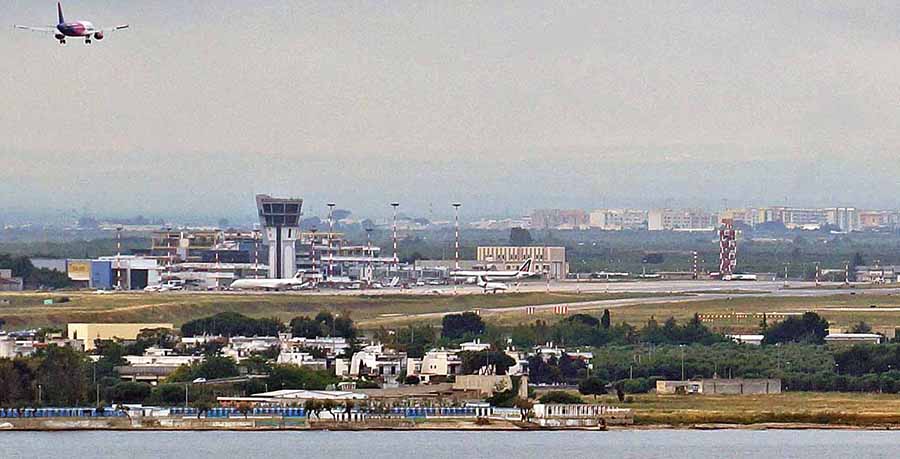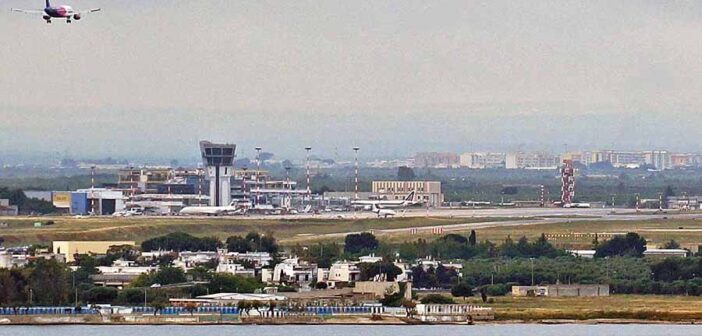
Bari Karol Wojtyła Airport Provides Welcoming and Efficient Travel HubBari Karol Wojtyła Airport, located eight kilometres northwest of Bari’s city centre in the Puglia region, serves as a key gateway to southern Italy, handling over 7.2 million passengers in 2024 with flights to more than 60 destinations across Europe, Africa, and the Middle East.
Named after Pope John Paul II and also known as Palese Airport, it acts as a focus city for Ryanair, alongside carriers like ITA Airways, Wizz Air, and EasyJet. The airport’s modern single terminal, expanded in 2015, offers a straightforward and comfortable experience for travellers exploring Puglia’s rich landscapes or connecting to major cities.
Accessing the airport is convenient, with multiple transport options linking to Bari and beyond. The FM2/FR2 train line connects the airport to Bari Centrale station in 15 to 20 minutes for €5.10, running every 20 to 30 minutes, though passengers must walk 10 minutes from the terminal to the platform. Bus services, including AMTAB Line 16 and Terravision shuttles, reach Piazza Aldo Moro in 25 to 40 minutes for €1 to €4, with stops at key city points like Via Quintino Sella.
Taxis, available 24/7 outside the arrivals hall, take 20 to 25 minutes to the city centre for €25, with fixed rates ensuring predictability. Drivers can reach the airport via the Bari ring road and SP73, though rush-hour traffic may extend travel times. Car hire desks from Avis, Europcar, Hertz, and others are located in the arrivals area, with vehicles nearby.
The single-terminal, five-level layout is easy to navigate, covering 30,000 square metres with check-in and departures on the first floor, arrivals on the ground floor, and offices above. Four jet bridges and 14 gates, split between Schengen (Gates A1–A5) and non-Schengen (Gates B), ensure short walking distances.
Security screening averages 10 to 20 minutes, but peak summer months, particularly July and August, can see longer queues, so arriving two hours early for domestic or three for international flights is advised. Fast Track services (€10) can speed up the process. Fog, thunderstorms, or air traffic control issues may cause delays, so checking live updates on aeroportidipuglia.it or Flightradar24 is recommended.
Dining and retail options cater to diverse tastes. Landside, McDonald’s and Lavazza serve fast food and coffee, while airside, Peroni Bar, De Canto Wine Bar, and La Trulleria offer local Puglia dishes like orecchiette and focaccia. Over 20 shops, including Aelia Duty-Free, Relay, and Pandora, stock cosmetics, electronics, Italian souvenirs, and beachwear, with non-EU passengers benefiting from tax-free purchases. The Work Lounge, accessible for a fee, provides a quiet space with complimentary food, drinks, and Wi-Fi, though the VIP Lounge is currently unavailable. Prices can be steep—€3 for water or €7 for coffee—so budgeting is wise.
Facilities are designed for passenger ease. Free, unlimited Wi-Fi is available via “AdP_FreeWifi” after email or social media registration, with charging points throughout. Accessibility features include lifts, designated parking, and special assistance services bookable through airlines for passengers with reduced mobility. Baby care rooms and a lost and found desk are available, alongside ATMs, a currency exchange, and a chapel. Parking offers 2,150 spaces across short-, medium-, and long-term lots, with rates starting at €2.50 per hour and free 15-minute drop-off zones. Nearby hotels like Parco dei Principi, two kilometres away with a shuttle, provide convenient stays.
On-time performance is generally reliable, with a 76% on-time rate, though summer congestion can lead to delays, particularly at check-in or passport control for non-Schengen flights. The airport is not a major transit hub, so connections are point-to-point, requiring self-transfers with minimum connection times of 30 minutes for domestic-to-domestic and 90 minutes for international-to-international flights. Self-transferring passengers must recheck baggage and clear customs, so extra time is needed. Weather, staffing shortages, or baggage handling issues are primary delay causes, especially in peak seasons.Bari Karol Wojtyła Airport’s compact design, local dining, and accessible transport ensure a dependable travel experience.
Ryanair
Ryanair operates flights to Dublin on Wednesdays and Saturdays from the main terminal, with check-in desks typically in the check-in area (desks 1–15). Passengers should check airport screens for exact assignments.
Flights to Ireland (e.g., Dublin) typically depart from non Schengen gates (e.g., gates A1–A10 or B1–B5). Bari Airport has dedicated waiting areas and specific eGates for non-Schengen flights, located after the security checkpoint in the departure area. After checking in on the first floor and passing through security, you’ll proceed to the correct waiting room for your non-Schengen flight, using the eGates for a quick passport check or a border police agent for manual control Specific gates are confirmed on departure boards. The terminal is single-level and easy to navigate, with departures on the first floor.




